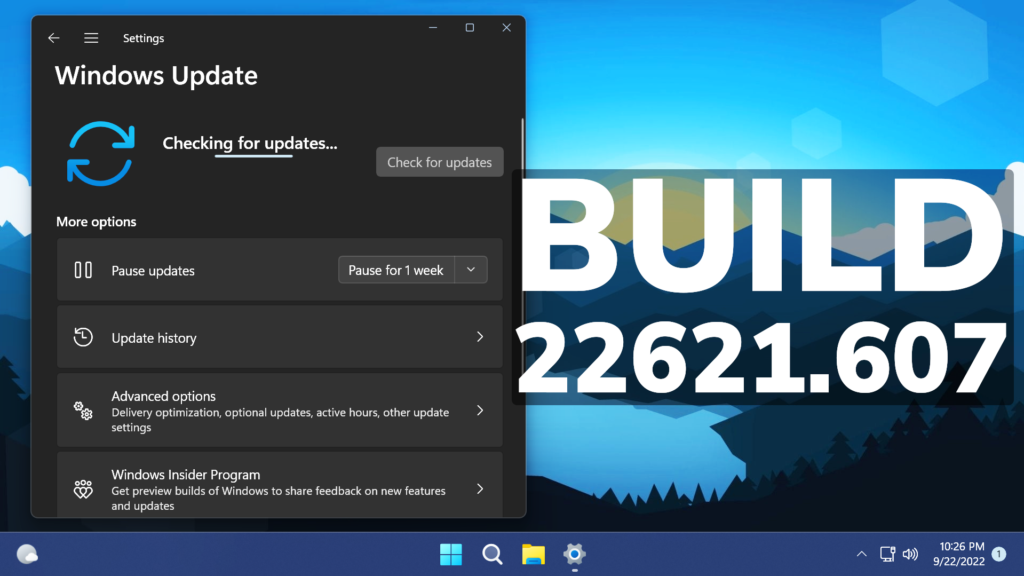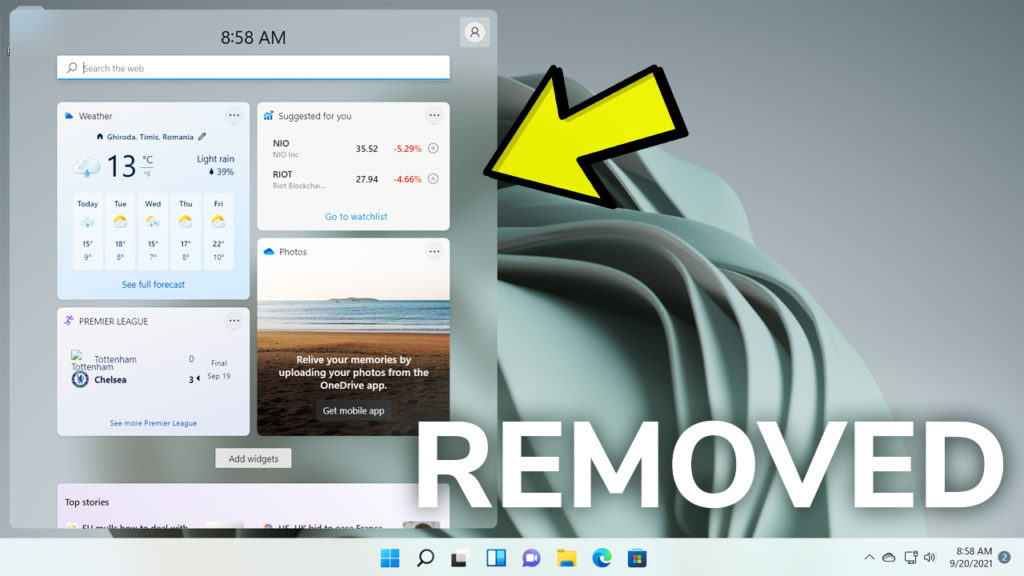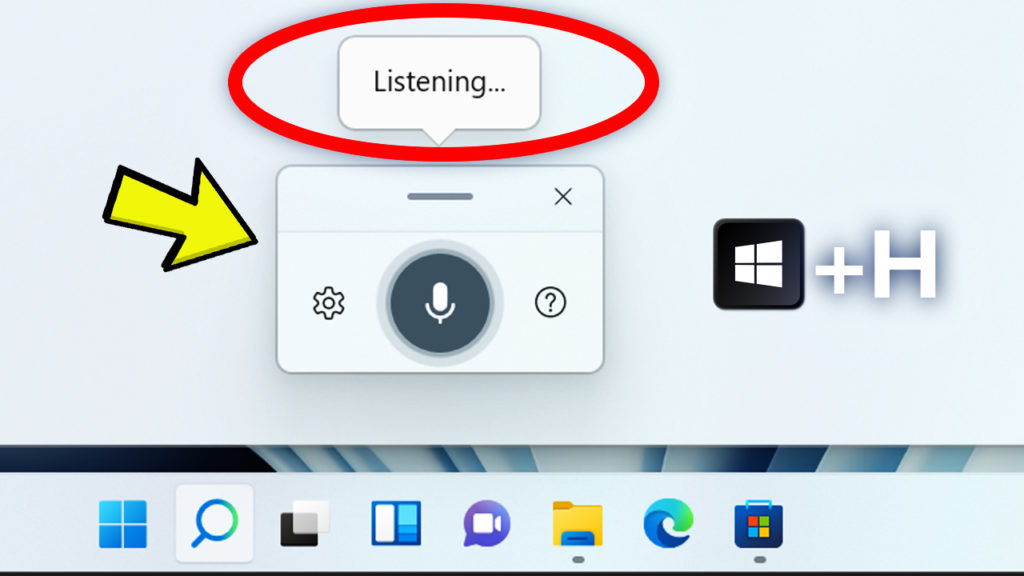In this article, we will talk about the latest Windows 11 Insider Preview Build for the Release Preview Channel, which is Build 22621.607.
This update includes the following improvements:
- We fixed an issue that affects some apps that were not signed by the Microsoft Store. You must reinstall them after you upgrade the OS.
- We fixed issues that cause updates to the Microsoft Store to fail.
- We fixed an issue that stops you from signing in to various Microsoft Office 365 apps. This affects Outlook, Word, Teams, and so on.
- We updated the start date for daylight saving time in Chile. It will start on September 11, 2022 instead of on September 4, 2022.
- We fixed an issue that affects the Windows Search service. It causes the indexing progress for the service to be slow.
- We fixed an issue that affects some processors. This issue occurs when you turn on Hyper-V and kernel Direct Memory Access (DMA) protections.
- We fixed an issue that affects a network’s static IP. The issue causes the configuration of the static IP to be inconsistent. Because of this, NetworkAdapterConfiguration() fails sporadically.
- We fixed an issue that affects Task Manager. It stops working when you switch between light and dark mode or change the accent color.
- We fixed an issue that affects the font of three Chinese characters. When you format these characters as bold, the width size is wrong.
- We fixed an issue that affects graphics drivers that use d3d9on12.dll.
- We reduced the power that the Dynamic Host Configuration Protocol uses on some devices when they are in Sleep mode.
- We fixed an issue that affects URLs generated by JavaScript: URLs. These URLs do not work as expected when you add them to the Favorites menu in IE mode.
- We fixed an issue that forces the IE mode tabs in a session to reload.
- We fixed an issue that affects window.open in IE mode.
- We fixed an issue that successfully opens a browser window in IE mode to display a PDF file. Later, browsing to another IE mode site within the same window fails.
- We fixed an issue that affects the Microsoft Japanese input method editor (IME). Text reconversion fails when you use some third-party virtual desktops.
- We fixed an issue that might cause an application to stop responding. This might occur when the input queue overflows.
- We fixed an issue that affects XML Paper Specification (XPS) viewers. This might stop you from opening XPS files in some non-English languages. These include some Japanese and Chinese character encodings. This issue affects XPS and Open XPS (OXPS) files.
- We fixed an issue that creates a duplicate print queue. Because of this, the original print queue stops working.
- We fixed an issue that might bypass MSHTML and ActiveX rules for Windows Defender Application Control (WDAC).
- We fixed an issue that affects the Miracast UI. Sometimes it closes too soon when you cast to devices that use the DeviceObjectType:Aep.
- We added more dynamic Widgets content to your taskbar with notification badging. When you open the Widgets board, a banner appears at the top of the board. It provides more information about what triggered the notification badge.
- We fixed an issue that affects the SharedPC account manager. The issue stops it from deleting many accounts during cleanup.
- We fixed an issue that causes LogonUI.exe to stop working. Because of this, you cannot dismiss the lock screen to view the credentials screen.
- We fixed an issue that affects Dual SIM calling. If you select no SIM on your phone and initiate a call on your device, Dual SIM functionality does not work.
- We fixed an issue that affects the FindNextFileNameW() It might leak memory.
- We fixed an issue that affects robocopy. Robocopy fails to set a file to the right modified time when using the /IS
- We fixed an issue that affects cldflt.sys. A stop error occurs when it is used with Microsoft OneDrive.
- We fixed an issue that affects Roaming User Profiles. After you sign in or sign out, some of your settings are not restored.
- We fixed an issue that affects the LanmanWorkstation service. It leaks memory when you mount a network drive.
For more information, you can check this article on the Microsoft Blog.
Share the article:



